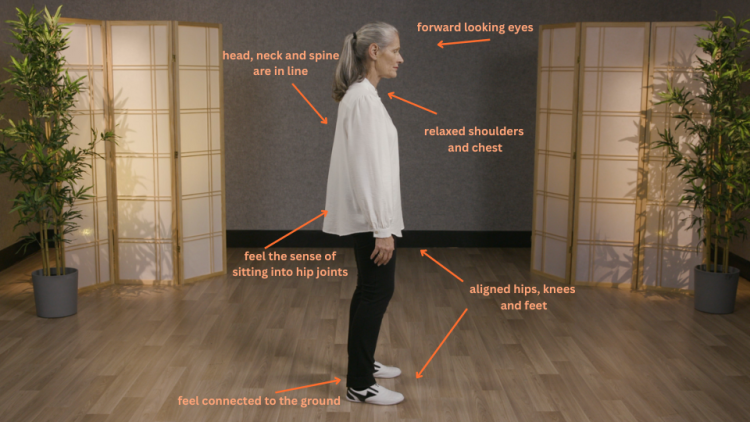
What is Tai Chi?
Tai Chi is an ancient mind-body practice that is believed to have its roots in the Wudang mountains in China. It is known as an ‘internal martial art’ that combines slow, gentle, and coordinated movements, with deep breathing and mindfulness (being fully present). By combining the mind and body, Tai Chi helps to give the person a sense of inner calm and greater awareness of their movements, breathing, and mental state. While originally developed as a form of self-defence, Tai Chi has now changed into a widely practiced exercise for health and well-being.
One important concept of Tai Chi is Yin and Yang. It represents the opposite forces and ever changing forces found in all aspects of life. In nature, for example, these balances can be seen in the moon (Yin) and sun (Yang), water (Yin) and fire (Yang) and female (Yin) and male (Yang). In Tai Chi practice, Yin is expressed through gentle and flowing motions, while Yang is expressed as a forward, or attacking movement. Harmony is reached when these Yin and Yang forces are constantly interchanging through the flowing and continuous movements.
Tai Chi is typically practiced through a series of slow flowing movements known as ‘postures’. A series of ‘postures’ is called a Form. It’s like a dance, with a specific order of movements which change smoothly from one to another.
There are five main styles of Tai Chi. These styles started from families living in different Chinese provinces. The styles are Chen, Yang, Wu, Hao and Sun. Although each family developed its own Forms, they all follow the same principles of movement. Yang style has soft, flowing movements and it is the most popular style of Tai Chi. It is the foundation of this MyJoint Tai Chi program.
What is Qigong?
Qigong (or Qi Gong) means growing energy. Qigong exercises are primarily practised to calm the mind, to relax and to restore energy. Qigong exercises are usually easier to practice as they have minimal footwork and movements are repeated a number of times. Each session of this 12-week Tai Chi program will begin and end with relaxation and Qigong exercises.
..
Health benefits of Tai Chi and Qigong
Tai Chi and Qigong offers a wide range of general health benefits that have been extensively studied. Adding Tai Chi and Qigong into your daily routine can lead to improvements in various aspects of health and well-being. This includes improvements in:









Specifically, scientific evidence shows that Tai Chi and Qigong have benefits for people with osteoarthritis. The slow and flowing movement helps alleviate joint pain and improves joint flexibility and muscle strength. This then allows you to move more freely with less discomfort in your daily activities. Practising Tai Chi and Qigong provides a holistic approach to improving physical and mental well-being for people with knee or hip osteoarthritis.
Tai Chi movement principles
There are a few general Tai Chi and Qigong movement principles to follow during this My Joint Tai Chi program:
- Relaxed breathing: Become aware of your breathing. Inhale deeply without lifting the shoulders, allowing your belly to expand slightly, and gently exhale feeling the belly contract. Focussing on the breath allows your body to relax and using your breath to guide the movements improves flow of energy. Breathing should be constant and circular, meaning the breath is not held but is flowing continuously.
- Body alignment: Maintain an upright but relaxed posture. Make sure your head, neck and spine are in line, with your eyes looking forward. Your shoulders and chest should be relaxed. The hips, knees and feet should be aligned and hips should be parallel to the floor. This alignment should remain constant throughout the movements.

- Mindful movement: Let go of distractions and be fully present when performing each movement. Develop an awareness of your body, breath, and flow of energy. Beware of any stress that may be creeping into the body (and the mind!) and gently release it by exhaling slowly.
Try to combine these movement principles into your Tai Chi practice. You will not only improve your technique but also deepen your mind and body connection. This also helps fostering a state of internal harmony. With continued practice, these principles will become a part of your day to day living.



